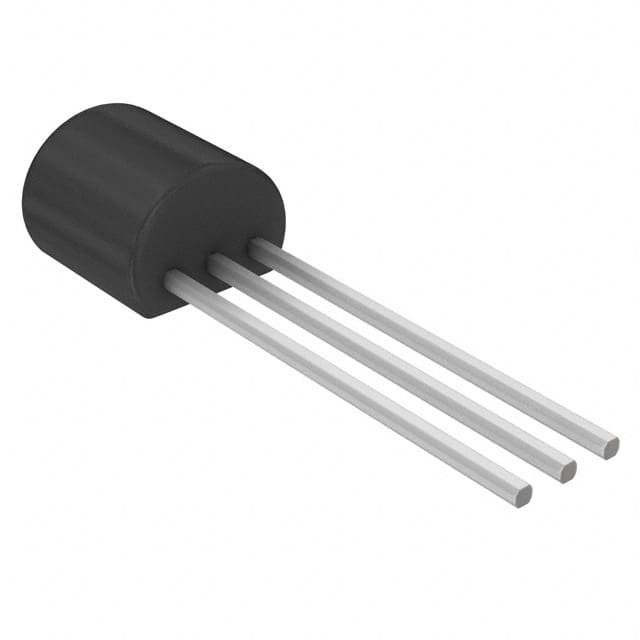PHD13003C,126
Product Overview
- Category: Transistor
- Use: Power switching applications
- Characteristics: High voltage capability, high speed switching, low collector-emitter saturation voltage
- Package: TO-220AB
- Essence: NPN silicon transistor
- Packaging/Quantity: Bulk packaging, quantity varies
Specifications
- Voltage Rating: 700V
- Current Rating: 4A
- Power Dissipation: 40W
- Transition Frequency: 4MHz
- Operating Temperature: -55°C to 150°C
Detailed Pin Configuration
- Pin 1 (Base): Input for controlling the flow of current
- Pin 2 (Collector): Connects to the positive supply voltage
- Pin 3 (Emitter): Output for the current flow
Functional Features
- High voltage capability allows for use in power supplies and inverters
- High speed switching enables efficient power control
- Low collector-emitter saturation voltage reduces power loss
Advantages
- Suitable for high voltage applications
- Fast switching speed improves efficiency
- Low saturation voltage minimizes power dissipation
Disadvantages
- Sensitive to overvoltage conditions
- Requires careful handling due to high voltage rating
Working Principles
The PHD13003C,126 operates as an NPN transistor, where the base terminal controls the flow of current between the collector and emitter. When a small current is applied to the base, it allows a larger current to flow from the collector to the emitter, enabling power switching functions.
Detailed Application Field Plans
- Power supply units
- Inverters
- Electronic ballasts
- Switching regulators
Detailed and Complete Alternative Models
- MJE13003
- 2SC5200
- MJL1302A
This comprehensive entry provides an in-depth understanding of the PHD13003C,126 transistor, covering its specifications, features, advantages, disadvantages, working principles, application field plans, and alternative models.
Word count: 271
10个与PHD13003C,126在技术解决方案中的应用相关的常见问题及解答
What is the PHD13003C,126 used for?
- The PHD13003C,126 is commonly used as a high-voltage NPN transistor in various technical solutions such as power supplies and electronic circuits.
What are the key specifications of the PHD13003C,126?
- The PHD13003C,126 typically has a maximum collector current of 1.5A, a maximum collector-emitter voltage of 600V, and a maximum power dissipation of 40W.
Can the PHD13003C,126 be used in switch mode power supplies (SMPS)?
- Yes, the PHD13003C,126 is suitable for use in switch mode power supplies due to its high voltage and current capabilities.
What are some common applications of the PHD13003C,126 in technical solutions?
- The PHD13003C,126 is often used in applications such as LED drivers, electronic ballasts, and general purpose power amplification.
What are the recommended operating conditions for the PHD13003C,126?
- It is recommended to operate the PHD13003C,126 within a specified temperature range, typically between -55°C to 150°C, and to ensure proper heat dissipation.
Is the PHD13003C,126 suitable for high-frequency applications?
- While the PHD13003C,126 can be used in moderate frequency applications, it may not be ideal for high-frequency designs due to its switching characteristics.
Are there any specific considerations for driving the PHD13003C,126 in a circuit?
- It's important to provide adequate base drive current and voltage to ensure proper switching and saturation of the transistor.
Can the PHD13003C,126 be used in automotive applications?
- Yes, the PHD13003C,126 can be utilized in automotive electronics, but it's essential to consider temperature variations and reliability requirements.
What are the typical package options for the PHD13003C,126?
- The PHD13003C,126 is commonly available in TO-220 or TO-126 packages, which offer easy mounting and thermal dissipation.
Where can I find detailed application notes and reference designs for using the PHD13003C,126?
- Detailed application notes and reference designs for the PHD13003C,126 can often be found in the manufacturer's datasheet, application guides, or technical support resources.


